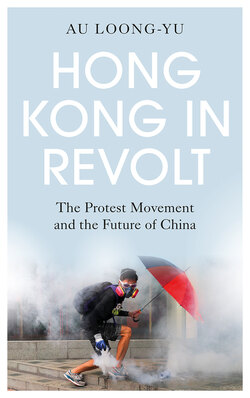Читать книгу Hong Kong in Revolt - Au Loong-Yu - Страница 14
The Xenophobic ‘Localists’
ОглавлениеSoon after the Umbrella Movement began, some ‘localists’ began to mount attacks on the so-called ‘left pricks’. Eventually the localists would emerge as the major beneficiaries of the Umbrella Movement.
The Western media tends to view the Hong Kong localists in a positive way, as democratic fighters against Beijing. Yet the picture is far more complicated. Before the Chinese term ‘localism’ entered into use among social activists and academics there had already been a visible new trend toward localism since the turn of the century, with the rise of conservationists chiefly concerned with preserving old architecture and streets. Eventually this unfolded into the above-mentioned Defence of the Queen’s Pier campaign in 2007. Although defeated, the campaign greatly promoted the idea of localism, which reflected at least two distinct discourses: 1) resisting government redevelopment plans, which were seen as destructive to local culture and collective memory; 2) resisting cross-border infrastructure projects involving mainland China so as to protect local autonomy, for instance the 2009–10 protests against the high-speed train project. However, it was the right wing of these very mixed localist discourses which eventually grew bigger. While the term ‘localist’ refers to a broad current in Hong Kong society which emphasises local values, terms like ‘nativist’ and ‘xenophobic localists’ were also used to describe a more specific group of clearly right-wing and anti-immigrant localists. Their spokespersons were Raymond Wong and the scholar Chin Wan-kan (or Chin Wan). Together with Raymond Wong’s apprentice, Wong Yeung-tat, they constituted a ‘xenophobic trio’, and were nicknamed ‘two Wong and one Chin’. Each had their own organisations, however. Their followers’ actions in the occupation area included:
• Silencing the voices of other democrats
• Inciting the masses to achieve their goals
• Making use of violence or the threat of violence
• Making racist statements about Chinese people, calling them ‘locusts’ which should be ousted
• Attacking mainland Chinese immigrants in Hong Kong, accusing them of stealing welfare from the government
The nativists put out stickers with the words mat seon zo gaau, tai fong saan seoi (‘don’t trust the left pricks, be vigilant against any call of disbandment’), which mainly targeted the HKFS and well-known activists who took part in the occupation, and who were allegedly guilty of empty talk while secretly wanting to disband the occupation. Yet the attack itself was nonsense. Their slander aimed to discredit the democratic forces within the movement by hinting that they were somehow associated with Beijing.
They also attacked organisations which hoisted flags or hosted open street forums; followed by harassing picketers from these organisations. On 12 October, on the call of Chin Wan, the nativists went to Mong Kok to disrupt the HKFS street forum.
The xenophobic trio’s agitation against the democratic forces was packaged in terms of their being more radical than them. Their slogan was ‘the HKFS does not represent us’. Their line of argument was that ‘since the Hong Kong government does not represent us neither does the HKFS, or anyone else’, and accordingly they opposed all signs and symbols of leadership or political representation: stages, flags, speakers, an assembly, voting, and so on; summed up in the slogan of caak daai toi, or ‘dismantle the big stage’. They put this into practice whenever the HKFS held a discussion forum with a stage. Their accusation against the HKFS was surely nonsense. The HKFS never claimed to represent everyone, and the forums that they organised did not reject pluralism.
The xenophobic trio could not mobilise more than a hundred people at its height, while the democratic parties and social movement organisations were far larger in number. The xenophobic trio was successful only because the democratic forces were totally unprepared.
The occupation of three main streets, with one of them adjacent to the government headquarters, lasted for 79 days. The movement was eventually defeated and this was followed by a period of reaction. Yet it is still memorable because it was simultaneously: 1) the first radical movement of civil disobedience in the thirty years of the Hong Kong democratic movement; 2) daring enough to stand up to Beijing to demand more political rights than the Hong Kong liberals dared to ask for, and more than Beijing was prepared to give; 3) a locally initiated democratic movement with massive support.
